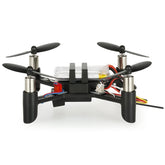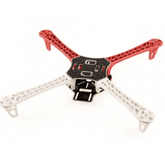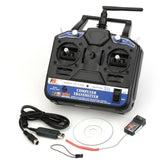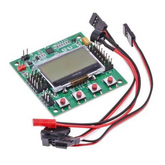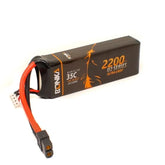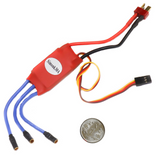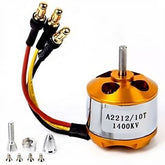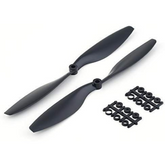What are drones? A-Z Guide Of Assembly to Flying
Summary
Explore the fascinating world of drones in our comprehensive A-Z guide. Discover what drones are and their diverse applications, from aerial photography to search and rescue missions. Dive into history to learn when these innovative machines were first invented and how they've evolved. Find out how drones take flight and get valuable tips for beginners on flying them safely. Uncover the secrets of drone control and why these devices are the future of technology. Join us on this aerial adventure, from assembly to soaring through the skies, and prepare to be captivated by the limitless possibilities of drones!
What are drones?

Drones are versatile unmanned aerial vehicles (UAVs) that can fly autonomously or be remotely controlled. By mounting cameras and other sensors on these aircraft, drones allow us to take a variety of measurements from unprecedented heights. These drones come in all sizes; some as small as 15 cm, others larger than 1 m with flight times ranging from 10 minutes for smaller models up to 2 hours for professional-grade equipment. Drones have the ability to capture stunning images and videos at 4K resolution which is used in the filmmaking industry today making them an invaluable tool for surveying land areas, inspecting infrastructure such as bridges and buildings etc., and performing search & rescue operations during natural disasters like floods or earthquakes among many other applications unimaginable till now!
They’re being used by police departments across the world for reconnaissance missions due to their versatility but also because they enhance safety since there is no need to put officers near potentially hazardous situations while allowing real-time updates without risking personnel lives. As we continue exploring drone technology more sophisticated hardware continues emerging giving way to endless possibilities for commercial enterprises to reap the benefits of this revolutionizing revolutionary technology developed over the last few decades.
read more : Working of A Drone
What are drones used for?
Drones are becoming increasingly popular in professional settings. With the latest technology and powerful features, drones can help businesses streamline their operations while enhancing product quality and cost efficiency.

In agriculture, for instance, drones provide a wide range of services such as precise data collection through aerial mapping capabilities that enable farmers to better understand crop conditions or identify areas of weed infestation. Drones also have applications in construction where they offer accurate surveying throughout project life cycles with minimal disruption to onsite activities. Furthermore, they serve useful purpose during inspections allowing multiple users at different locations to access high-definition images from difficult access points without putting personnel at risk by entering hazardous environments like smoke stacks or tanks full of chemicals.
Additionally, commercial drone use is not restricted only to land but extends out into waterscapes too! Employing specialized underwater hardware paired with advanced software solutions allows companies operating within marine industry sectors such as shipping/logistics or oil & gas inspection executives unprecedented levels for monitoring activity-related maritime risks including shipwrecks and illegal fishing. Finally, the demand for airborne surveillance vehicles has risen significantly due to growing security concerns over the past years giving way to increased use of military-grade unmanned systems equipped with sensors providing real-time situational awareness which allows militaries worldwide an edge when engaging target enemies without risking pilot lives!!
read more : Drone Part List
When were drones invented?
Drones have been around for decades, first used by the military before they found their way into civilian use. The exact date when drones were created is unknown; however, it's believed that unmanned aerial vehicles (UAVs) emerged in the early 20th century as a result of advances in aeronautics technology and increasing interest from militaries worldwide.
The history of modern-day drones began with Israel’s invention of the IAI Scout drone in 1978 which was later adopted by many military forces globally including the U.S. Army and Navy who further developed them during this period to create what we know today as Unmanned Aerial Vehicles or UAVs. Soon after its success within militaries advances were made towards smaller scale consumer-ready versions launching recreational models on an affordable basis starting in 2012 leading up till now where popular brands release high-end professional grade units suitable for mapping photography live streaming news reporting professional videography package delivery among other gargets usages showing how far along these devices have come since its conception over four decades ago.
read more : Programming a Drone
How do drones fly?
Drones are unmanned aerial vehicles (UAVs), capable of controlled flight without a human pilot on board. They usually consist of four propellers, powered by drone motors and battery that enable them to fly autonomously or be operated remotely from ground control stations. Drones have become increasingly popular due to their flexibility for use in both commercial services and recreational activities such as photography, filming, search-and-rescue operations, delivery services and many others.

The way drones fly is actually quite simple; they rely on the lift generated through centrifugal force created when air passes over the wings at different speeds between each side - this difference makes one wing generate more uplift compared with its opposite counterpart resulting in forward motion hence creating a state of ‘aerodynamic balance’ allowing it to keep flying even if neither rotor is spinning faster than any other individually.
Additionally, most modern technologies incorporated into these UAV systems feature some sort of autonomous navigation algorithms which help navigate around obstacles while still maintaining stability during operation – providing both safety assurance but also confidence among operators who may not always require expert skill levels before being able to safely operate large scale drone models outfitted with cameras ready for professional-grade imagery or footage capture applications across multiple industries like agriculture along special environments where manual access could prove difficult otherwise impossible thus suggesting how significant further growth potential begins just now!
read more : Types of Drones
How to fly drones for beginners?
Flying drones are becoming increasingly popular among all age groups. For those looking to get started, it's important to understand the basics of drone flight so you can fly safely and with confidence.
To begin your journey into drone flying, understanding basic terminology is essential. While there are a number of terms used when talking about drones, they generally fall under two main categories: aircraft and autopilot system components. Aircraft includes things like frame size and motor type which affects how fast or slow your craft flies; Autopilot systems consist primarily of GPS modules that allow for more precise navigation functions such as return-to-home (RTH) capabilities in case your drone encounters an issue during flight.
Whether you're just starting out or have some previous experience with unmanned aerial vehicles (UAVs), familiarizing yourself with both types will help inform safe practices throughout each session where safety should always be the top priority – no matter what level of piloting skill you possess! Once comfortable enough make sure to check local laws regarding operating UAVs before taking off as regulations vary by location in order to ensure legal operation at all times.
read more : Assembling the DM002 Drone
Visit our Drone Frames collection page for assemble on your own.
How drones are controlled?
Drones are becoming increasingly popular due to their ease of use and convenience. They can be operated remotely, or programmed using a simple set of controls. The most common way drones are controlled is through an app that allows you to customize the flight functions like speed, altitude, direction and other settings from your device's touchscreen interface. You can also connect some models with compatible controllers for more precise control options if desired.

Using geo-fencing technology, many drone operators define boundaries in which the machine will fly safely without any additional user input apart from take-off/landing instructions given via remote commands during operation hours - this helps prevent accidents caused by oversteering or entering no-fly zones defined by authorities both on land & up high in restricted airspace regions across countries around the world. Additionally, special programming languages such as Python Scripts let aviators run custom routines tailored towards mission objectives at hand (easing data collection steps) just before deployment begins each time! Lastly, autonomous features focus on stability so aircraft remain ultra steady while hovering midair avoiding contact with surfaces whenever orientation changes must occur - offering smooth hands-free aerial experiences when flying outdoors regardless of hostile environmental conditions present outside at all times.
read more : Affordable Drone Batteries
Why drones are the future?
Drones are quickly becoming the next big thing in modern technology. With their ability to traverse large distances and navigate complex environments, these autonomous machines have become a major tool for businesses looking to gain efficiency and increase productivity. Drones can carry out tasks that would be otherwise difficult or impossible with traditional methods such as delivering goods and gathering footage of areas not easily reachable by humans.
Furthermore, they facilitate quick data collection, allowing companies to make real-time decisions based on up-to-date information gathered from far away places via drones rather than relying on guesswork or outdated sources of data collected through manual processes which require time spent travelling back in forth between locations or waiting for costly field trips. As fast speeds continue increasing coupled with added features like cameras mounted at strategic angles capable of taking high-resolution pictures even during night operations; this will open up more opportunities where imagination is now the only limitation when it comes to thinking about how drones could further revolutionize various sectors down the line including logistics & transportations systems among others operating across all industries today!
Conclusion:
Drones are a captivating blend of technology and innovation that have evolved from simple beginnings to become a revolutionary force in various industries. We've explored their origins, their diverse applications, the mechanics of their flight, and even the basics of flying one for beginners. The magic lies in how they are controlled, a testament to human ingenuity. As we've seen, drones are not just a passing trend; they are the future. Their potential to transform fields ranging from agriculture to filmmaking is undeniable. So, whether you're an enthusiast or a budding pilot, the sky's the limit in this exciting drone-filled world. Don't miss your chance to soar into the future of technology!
If you appreciate our work don't forget to share this post and leave your opinion in the comment box.
Please do check out other blog posts about Popular electronics
Make sure you check out our wide range of products and collections (we offer some exciting deals!)



